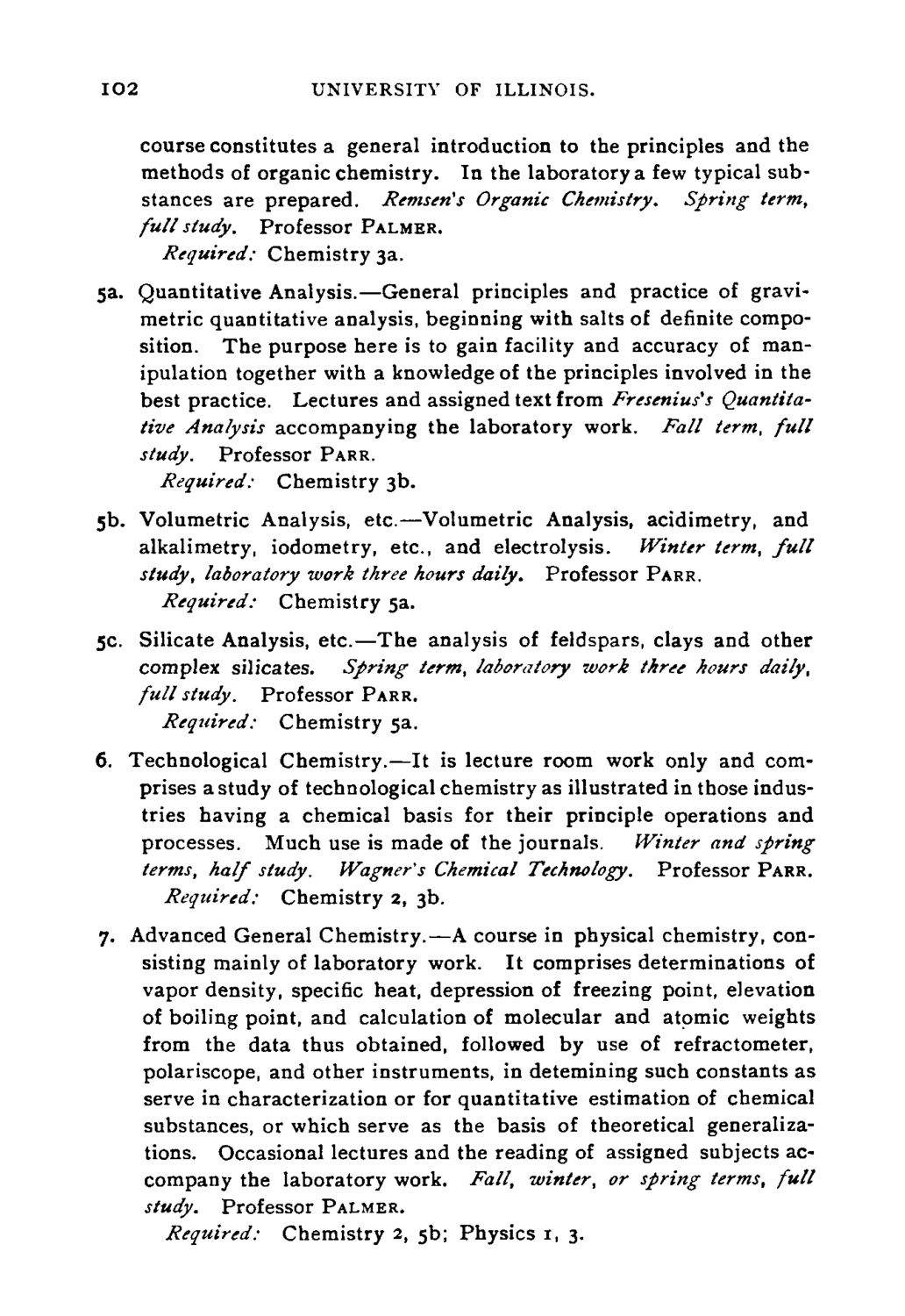| |
| |
Caption: Course Catalog - 1893-1894
This is a reduced-resolution page image for fast online browsing.

EXTRACTED TEXT FROM PAGE:
102 UNIVERSITY OF ILLINOIS. course constitutes a general introduction to the principles and the methods of organic chemistry. In the laboratory a few typical substances are prepared. Retnseris Organic Chemistry. Spring term, full study. Professor PALMER. Required: Chemistry 3a. 5a. Quantitative Analysis.—General principles and practice of gravimetric quantitative analysis, beginning with salts of definite composition. The purpose here is to gain facility and accuracy of manipulation together with a knowledge of the principles involved in the best practice. Lectures and assigned text from Fresenius's Quantitative Analysis accompanying the laboratory work. Fall term, full study. Professor PARR. Required: Chemistry 3b. 5b. Volumetric Analysis, etc.—Volumetric Analysis, acidimetry, and alkalimetry, iodometry, etc., and electrolysis. Winter term, full study, laboratory work three hours daily. Professor PARR. Required: Chemistry 5a. 5c. Silicate Analysis, etc.—The analysis of feldspars, clays and other complex silicates. Spring term, laboratory work three hours daily, full study. Professor PARR. Required: Chemistry 5a. 6. Technological Chemistry.—It is lecture room work only and comprises a study of technological chemistry as illustrated in those industries having a chemical basis for their principle operations and processes. Much use is made of the journals. Winter and spring terms, half study. Wagner's Chemical Technology. Professor PARR. Required: Chemistry 2, 3b. 7. Advanced General Chemistry.—A course in physical chemistry, consisting mainly of laboratory work. It comprises determinations of vapor density, specific heat, depression of freezing point, elevation of boiling point, and calculation of molecular and atomic weights from the data thus obtained, followed by use of refractometer, polariscope, and other instruments, in detemining such constants as serve in characterization or for quantitative estimation of chemical substances, or which serve as the basis of theoretical generalizations. Occasional lectures and the reading of assigned subjects accompany the laboratory work. Fall, winter, or spring terms, full study. Professor PALMER. Required: Chemistry 2, 5b; Physics 1, 3.
| |